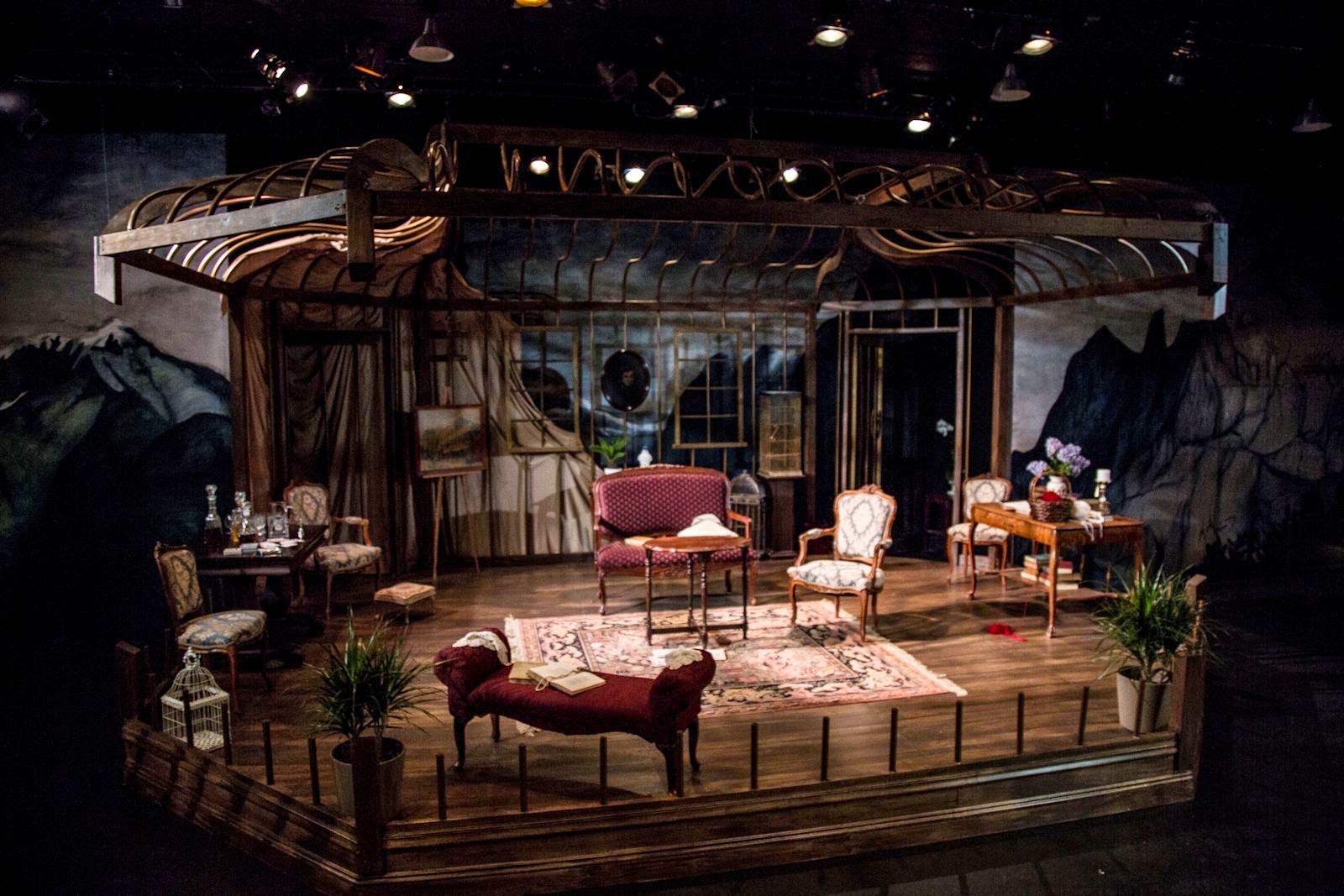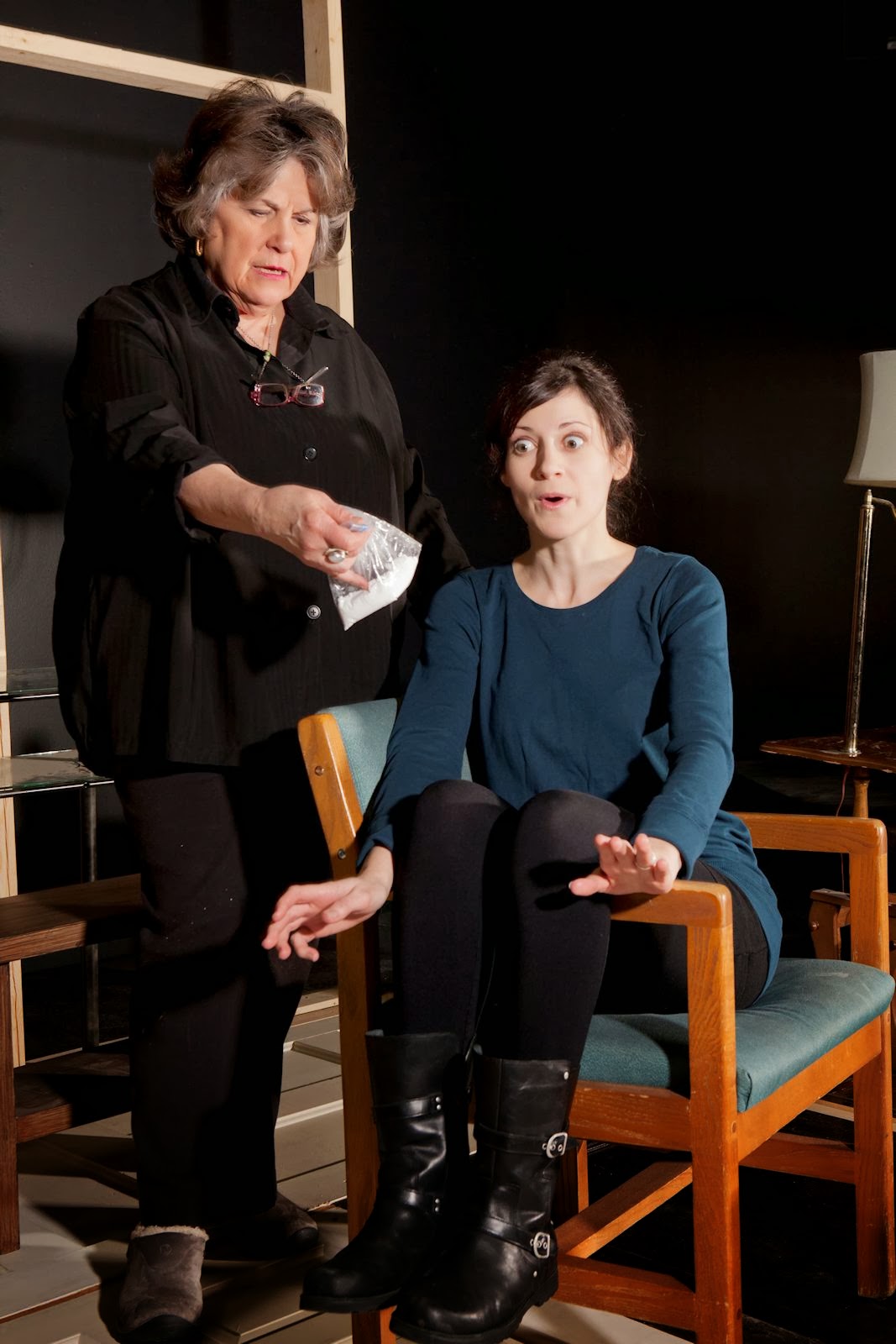Mother Lode - a new play
One of our "many" goals is to introduce new voices to the performing arts.
Here is an article by Elizabeth (Liz) Beck a senior at Robert Morris. She attended a recent tech rehearsal.
“Sometimes it’s the dementia and sometimes it’s her.”
 This statement, spoken about halfway through Off the Wall’s newest venture, Mother Lode, walks a fragile line that denotes the major struggles we go through as our friends and family age. It transcends generations. It explains the crucial separation caregivers discover in the trenches of the “bad days.” There is a demarcation between the human and the disease—here in this chasm is where we find two women in Mother Lode.
This statement, spoken about halfway through Off the Wall’s newest venture, Mother Lode, walks a fragile line that denotes the major struggles we go through as our friends and family age. It transcends generations. It explains the crucial separation caregivers discover in the trenches of the “bad days.” There is a demarcation between the human and the disease—here in this chasm is where we find two women in Mother Lode.
In the play, we meet Linda, a devoted but disgruntled caregiver to her mother Ruth, who has advanced dementia and proves to be belligerent to any type of help that does not come from her daughter. Among other things, Linda harbors resentment towards her brother who never pitches in and her absentee father who will not commit to moving back in with Ruth. Both Ruth and Linda are played by the immensely talented (and real-life) Linda Haston; the audience is notified of her changes from daughter to mother and back by way of various hats and a bright purple jacket. I’ll keep the plot summary to a minimum, but of the thematics I’ll just say this: the themes discussed in this play will never not be relevant.
Beautifully and carefully written by Virginia Wall Gruenert, the artistic director at Off the Wall, this play begins with the trials of mother/daughter relationships and ends with the immense love and nostalgia we all experience when losing a loved one; it details Ruth’s worries about her daughter pursuing acting, a career she views as ‘less than’ and which she would rather replace with nursing; it covers Linda’s turmoil as she grapples with resenting her mother for being difficult and guilt for feeling bitter; it artfully explains what it was like for girls growing up in an era of segregation and racism.
Mother Lode does all these things—and more.
What struck me the most—and what has me telling everyone they need to go see this show—is Linda Haston’s genius performance. Watching Linda moving around the stage, hearing her voice filling the theatre, empathizing with her raw honesty; it’s magical. I can only imagine how difficult it is to do a show where you are the sole actress, both mentally and physically. Haston pulls off this duality so easily, at times it truly seems as if there are two separate actresses involved in the production, which speaks to her wealth of skill and talent. There are scenes in which Haston must pantomime walking her daughter to school, pinning someone up against a wall, and dancing around. All of these are done so convincingly, it’s easy to imagine the stories she recounts as her mother Ruth.
Another thing I want to point out: the set of this play is extremely unique. There are no set changes throughout the show, save the ones Haston performs herself, and the backdrop is a plethora of picture frames hanging from the ceiling, housing both pictures of Haston and her mother. It provides this feel of authenticity that makes the play feel so much more honest and heartfelt.
Sitting in the audience, you don’t only feel like you’re watching a play; you feel privileged to hear the story, as if you’ve been invited in to Haston’s kitchen and given a cup of tea—or something equally heartwarming.
Here is an article by Elizabeth (Liz) Beck a senior at Robert Morris. She attended a recent tech rehearsal.
“Sometimes it’s the dementia and sometimes it’s her.”
 This statement, spoken about halfway through Off the Wall’s newest venture, Mother Lode, walks a fragile line that denotes the major struggles we go through as our friends and family age. It transcends generations. It explains the crucial separation caregivers discover in the trenches of the “bad days.” There is a demarcation between the human and the disease—here in this chasm is where we find two women in Mother Lode.
This statement, spoken about halfway through Off the Wall’s newest venture, Mother Lode, walks a fragile line that denotes the major struggles we go through as our friends and family age. It transcends generations. It explains the crucial separation caregivers discover in the trenches of the “bad days.” There is a demarcation between the human and the disease—here in this chasm is where we find two women in Mother Lode.In the play, we meet Linda, a devoted but disgruntled caregiver to her mother Ruth, who has advanced dementia and proves to be belligerent to any type of help that does not come from her daughter. Among other things, Linda harbors resentment towards her brother who never pitches in and her absentee father who will not commit to moving back in with Ruth. Both Ruth and Linda are played by the immensely talented (and real-life) Linda Haston; the audience is notified of her changes from daughter to mother and back by way of various hats and a bright purple jacket. I’ll keep the plot summary to a minimum, but of the thematics I’ll just say this: the themes discussed in this play will never not be relevant.
Beautifully and carefully written by Virginia Wall Gruenert, the artistic director at Off the Wall, this play begins with the trials of mother/daughter relationships and ends with the immense love and nostalgia we all experience when losing a loved one; it details Ruth’s worries about her daughter pursuing acting, a career she views as ‘less than’ and which she would rather replace with nursing; it covers Linda’s turmoil as she grapples with resenting her mother for being difficult and guilt for feeling bitter; it artfully explains what it was like for girls growing up in an era of segregation and racism.
Mother Lode does all these things—and more.
What struck me the most—and what has me telling everyone they need to go see this show—is Linda Haston’s genius performance. Watching Linda moving around the stage, hearing her voice filling the theatre, empathizing with her raw honesty; it’s magical. I can only imagine how difficult it is to do a show where you are the sole actress, both mentally and physically. Haston pulls off this duality so easily, at times it truly seems as if there are two separate actresses involved in the production, which speaks to her wealth of skill and talent. There are scenes in which Haston must pantomime walking her daughter to school, pinning someone up against a wall, and dancing around. All of these are done so convincingly, it’s easy to imagine the stories she recounts as her mother Ruth.
Another thing I want to point out: the set of this play is extremely unique. There are no set changes throughout the show, save the ones Haston performs herself, and the backdrop is a plethora of picture frames hanging from the ceiling, housing both pictures of Haston and her mother. It provides this feel of authenticity that makes the play feel so much more honest and heartfelt.
Sitting in the audience, you don’t only feel like you’re watching a play; you feel privileged to hear the story, as if you’ve been invited in to Haston’s kitchen and given a cup of tea—or something equally heartwarming.



Comments
Post a Comment